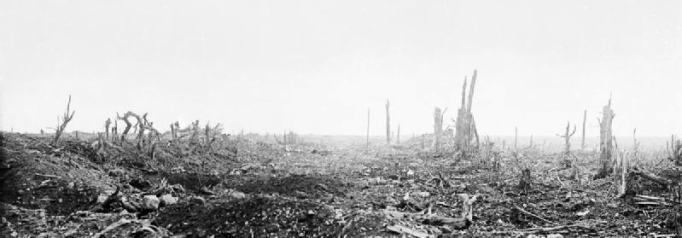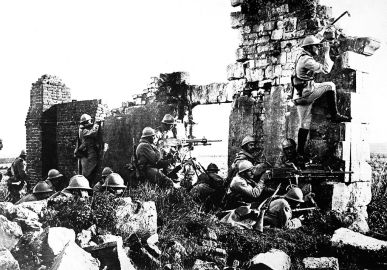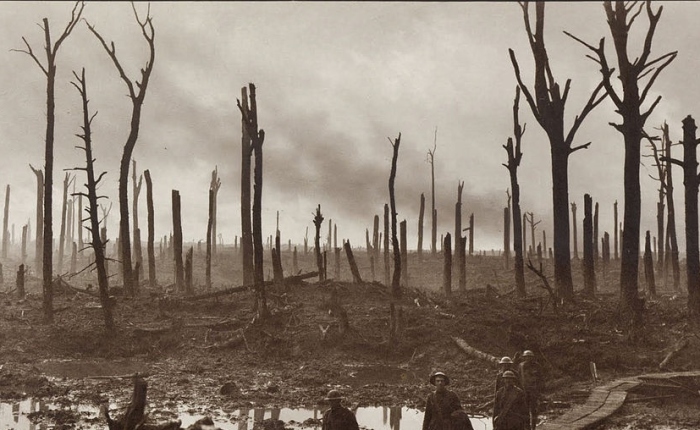A graveyard of sorts stands where a lush forest once grew. Broken and burnt trunks of trees stand as markers with smoke rising in the background. Haze, or more smoke, drift among the markers. Soldiers walk in the foreground with experiences detained as memories in their minds; experiences we could never fully understand, nor would we wish to. Yet we should seek to empathize with them as much as we can, to not just learn about history, but connect deeply with it, to understand the consequences of the past to help us prevent such tragedies from occurring again.
Emotion and visualization are the best tools we can use to connect to a historical period or event. In my second post I included a quote by David McCullough, which I will include again because it works so well here:
History is about people. History is human… You have to get to know the people. You have to get inside their lives.
-David McCullough
The purpose of the following two poems is to inspire an emotional connection to the tragedy of the First World War. These are poems that describe a basic overview of the war itself, nothing specific about a person or event, so they do not go as deep as other poems about similar topics have, but it is a start for me, anyway.
The Great War By: Daniel Derasaugh A false calm hides resting chaos. While forces build their strength. Ignorant of their new power; such destructive might. Pressure mounts, peace strains. Then a spark; a tiny yet terrible flash. The vortex forms and rapidly death begins its spiral. Churning and cranking. Slowly, flesh is drawn to the grinder. Faces and futures. Torn and tattered. Crimson to bone, bone to powder. Only Echoes remain… …echoes.

Field of Battle By: Daniel Derasaugh It is silent now. The earth is still, the air is calm the last echoing moan has now ceased. Succumbed, and silenced; quiet. Yet hours before, Beneath a dark sky cloaked in clouds, the ground rumbled with deep concussions. Far away thunder and nearby blasts cracked the air. Doom, not weather. Death, not rain. The Earth lay torn and burning. Rifles sang out their chorus, Munitions burst with atmospheric flashes, like lightening upon the horizon. Death stood tall, casting a cloaking shadow upon her spoils.

The understanding that people experienced and endured periods we study is essential to making it matter. It allows us to connect to what ordinarily we can only know through a photo, or perhaps a video or written/verbal first hand accounts.

We have to tap into the emotions of those who experienced what we are studying, and to do that we have to tap into our own emotions in order to empathize as much as we can. We can never really match their experiences, but we should try to make our understanding as profound as we can.
The further the event was in the past, the more guesswork it becomes, but we can make educated guesses. The real goal is to seek that connection; make it matter, then get into the content and facts of the subject area.
